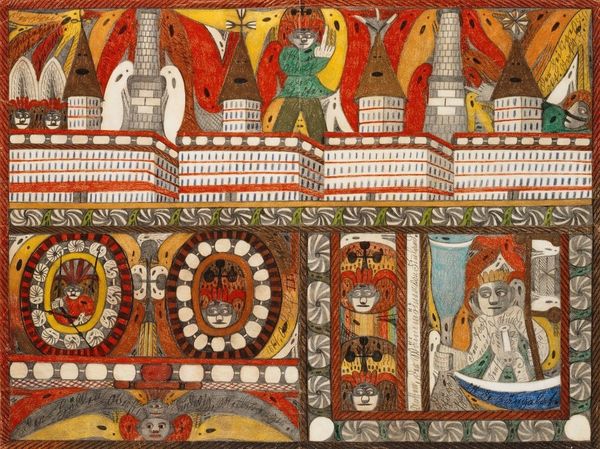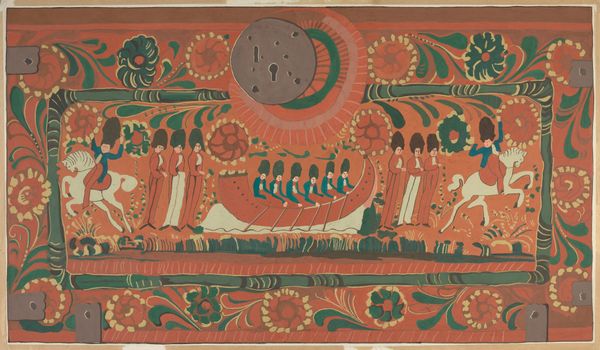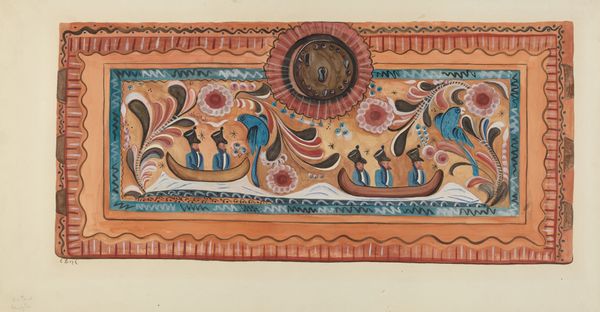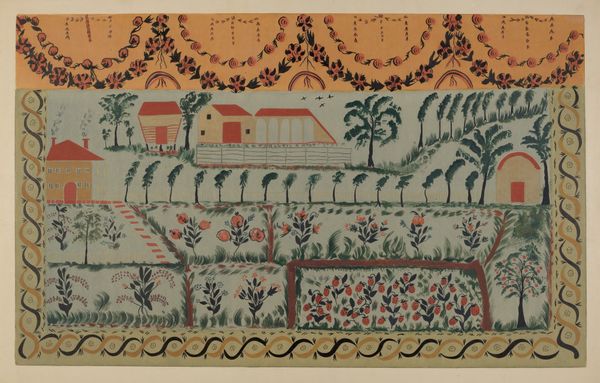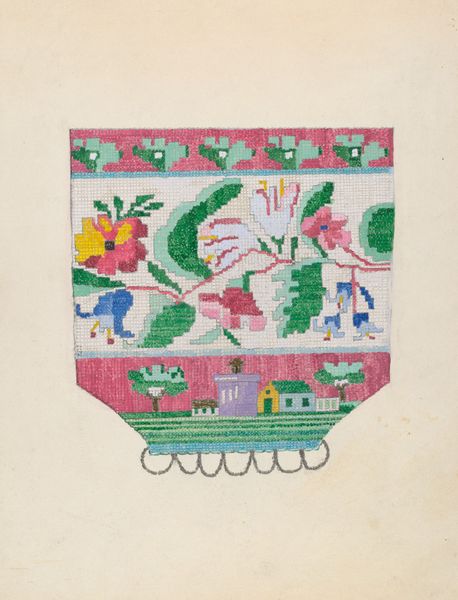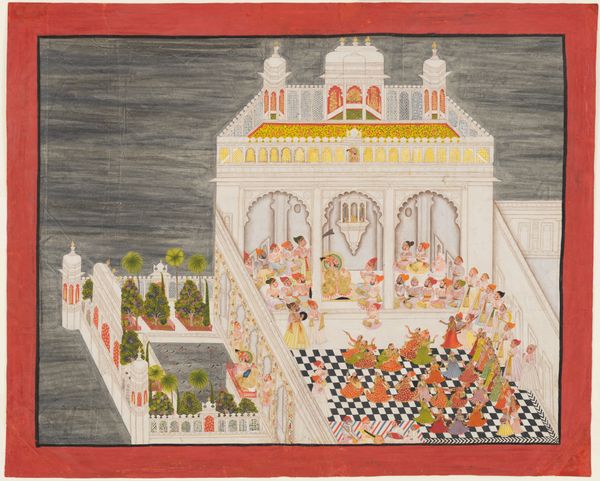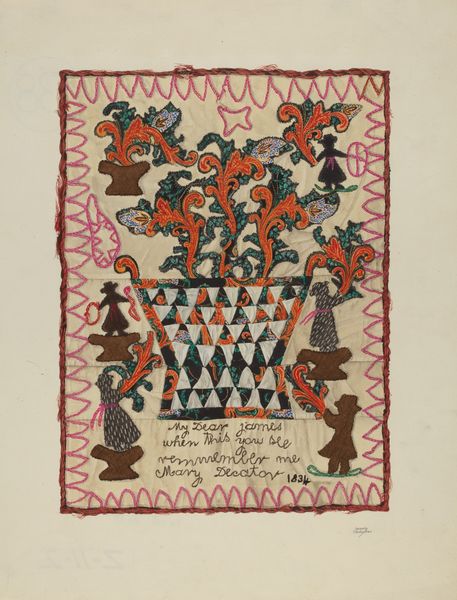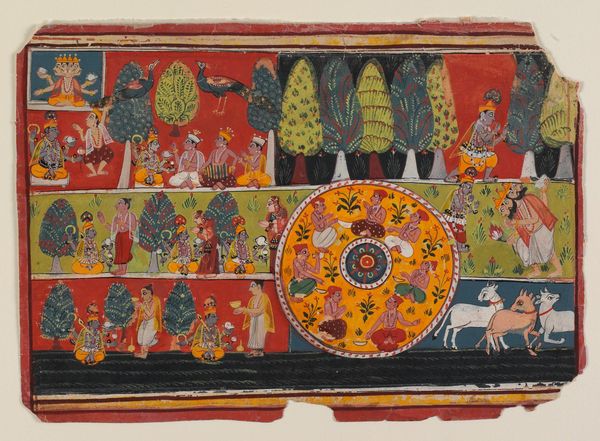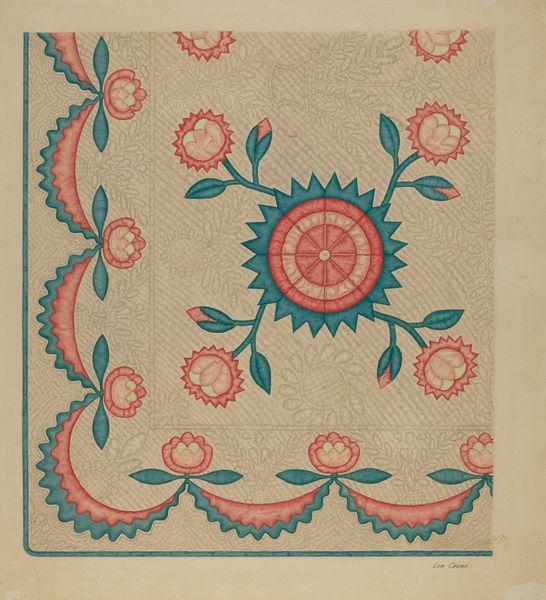
painting
#
painting
#
folk-art
Dimensions: sheet: 54.8 × 72.1 cm (21 9/16 × 28 3/8 in.) Original IAD Object: none given
Copyright: National Gallery of Art: CC0 1.0
Editor: This is "Painted Chest, Michoacan," dating from between 1935 and 1942. It's a vibrant mix of drawing, painting, and other media. It reminds me of a folk mural. What strikes you about this piece? Curator: The chest presents an intriguing dialogue between tradition and modernity. The imagery—the Mexican flag, colonial architecture—seems to be consciously grappling with ideas of national identity and history in post-revolutionary Mexico. Editor: In what ways? Curator: Consider the indigenous folk-art style alongside those European-style buildings. Doesn't it prompt questions about cultural hierarchies, about who gets to represent the nation, and what symbols are chosen? Who was this chest made for, and what stories was it meant to tell about Mexican identity in that era? Editor: So, you're suggesting that this seemingly simple chest might be making a statement about the complexities of Mexican identity, mixing pride with maybe a little critique? Curator: Precisely! The layering of symbols—indigenous art practices with representations of power and imported cultural references—opens a space for exploring how national narratives are constructed, and often contested, within visual culture. The symbolism definitely reveals those types of power dynamics. Editor: I see what you mean. It's not just a decorative object; it's a historical document in a way, capturing a specific moment and its tensions. Curator: Absolutely. It encourages us to question the role of folk art in shaping national consciousness, particularly in relation to issues of class, race, and colonial legacies. Editor: Thanks. I definitely have a deeper appreciation for this folk art now. Curator: I think situating art objects like this within historical contexts opens up richer conversations about representation.
Comments
No comments
Be the first to comment and join the conversation on the ultimate creative platform.
